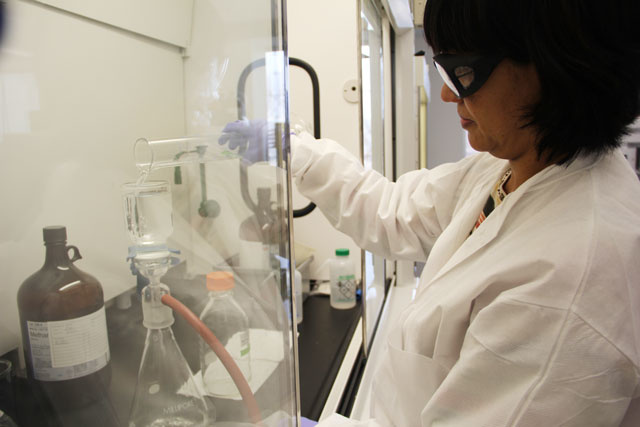
What's in your water? Public utilities across America provide 34 billion gallons of water every day and are required by the Environmental Protection Agency (EPA) to monitor that water supply for specific contaminants that may pose a risk to human health.
The EPA recently issued a new list of contaminants that will be part of municipal water systems testing beginning this year and continuing through 2015. The State Hygienic Laboratory at the University of Iowa is the only state environmental public health laboratory that has achieved approved status to test for all 28 chemical contaminants on this list, known as the unregulated contaminant monitoring regulation 3 (UCMR3).
"As the state's environmental and public health laboratory, we believe that it is important that Iowa's environmental laboratory have the capability to perform this testing for public water supplies for our citizens," says Michael Wichman, associate director and head of the Hygienic Laboratory's Environmental Health Programs.
The Hygienic Laboratory at the University of Iowa is the only state environmental public health laboratory that achieved approved status to test for all 28 chemical contaminants on the list.
Americans drink more than one billion glasses of tap water every day, according to the EPA. Clean water is especially important for babies in the first six months of life because they consume seven times as much water per pound of body weight as an average adult.
The Safe Drinking Water Act of 1996 requires that every five years the EPA issue a new list of up to 30 contaminants that public water systems are required to monitor. These are considered unregulated or emerging contaminants (except for chromium) because there are no published health standards by which to measure their threat to human health and because there is concern that they may pose such a risk. The UCMR3 testing will help measure the occurrence and exposure levels of the contaminants that constitute a potential health risk.
"This monitoring provides a basis for future regulatory actions to protect public health," the EPA reported.
This UCMR3 list was published by the EPA in May 2012. UCMR1 was published in September 1999 and UCMR2 in January 2007.
More information about the UCMR3 list is available on the State Hygienic Laboratory's website.